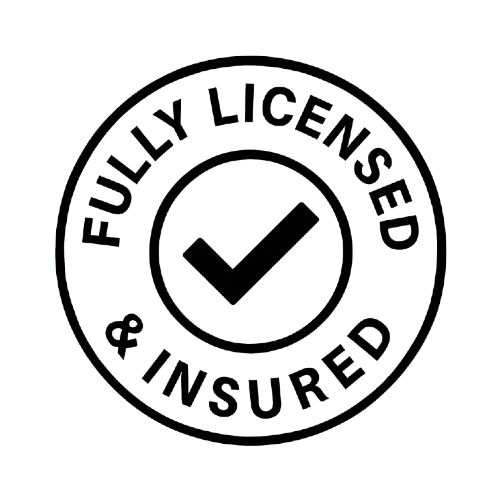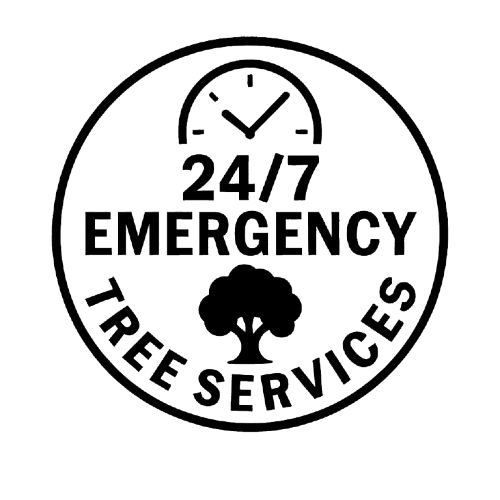Tree Surgeon vs. Arborist: What’s the Difference and Why It Matters

Trees are more than just elements of our landscape; they are vital to our ecosystem and contribute to the beauty and health of urban environments like New York City. When it comes to caring for trees, you might encounter two types of professionals: tree surgeons and arborists. While their roles may seem similar, they have distinct responsibilities and expertise. Defining the Roles: Tree Surgeon and Arborist What Is a Tree Surgeon? A tree surgeon, often referred to as a tree care technician, specializes in the physical maintenance and removal of trees. Their primary responsibilities include pruning, trimming, cutting down trees, and removing stumps. They are skilled in using equipment like chainsaws, cranes, and chippers to perform their tasks safely and efficiently. Tree surgeons are essential when you need to address immediate physical issues with your trees, such as removing dead or hazardous limbs or clearing fallen trees after a storm. What Is an Arborist? An arborist, on the other hand, is a professional trained in the science of arboriculture, which is the study of trees, shrubs, and other perennial woody plants. Arborists focus on the overall health, growth, and preservation of trees. They diagnose diseases, assess tree health, and develop comprehensive care plans to promote longevity and vitality. Services provided by arborists include soil analysis, pest management, fertilization, and strategic pruning to encourage healthy growth patterns. Education and Certification For Tree Surgeons and Arborists Tree Surgeons While formal education isn’t always required, many tree surgeons gain their skills through vocational training programs and on-the-job experience. They often hold certifications in specific skills like climbing and operating heavy machinery. Safety training is a critical component of their education due to the hazardous nature of their work. Arborists Arborists typically have a more extensive educational background in tree biology and ecology. Many hold degrees in forestry, horticulture, or environmental science. Professional arborists often seek certification from organizations like the International Society of Arboriculture (ISA), which requires passing comprehensive exams and committing to ongoing education. When to Hire a Tree Surgeon You should consider hiring a tree surgeon when: Immediate Removal Is Needed: If a tree poses a safety risk due to damage or disease, a tree surgeon can safely remove it. Pruning and Trimming: For aesthetic purposes or to remove obstructive branches, tree surgeons can perform precise cuts. Storm Damage Cleanup: After severe weather, they can clear fallen trees and debris promptly. When to Consult an Arborist You should consult an arborist when: Tree Health Assessment: If you’re concerned about the health of your trees, an arborist can diagnose issues and recommend treatments. Long-Term Care Plans: For ongoing maintenance and care, arborists can develop strategies to ensure your trees thrive. Planting and Transplanting: They advise on the best species to plant in specific locations and the proper techniques for transplanting. Why the Distinction Matters Choosing between a tree surgeon and an arborist depends on your specific needs. Hiring the right professional ensures that the job is done correctly and safely. For instance, employing a tree surgeon for tree removal without understanding the underlying health issues could lead to unnecessary costs or loss of valuable trees. Conversely, consulting an arborist when immediate physical work is required might delay urgent actions. Professional tree care helps to: Prevent Property Damage: Regular maintenance can prevent branches from damaging property or power lines. Promote Safety: Removing hazardous trees or limbs reduces the risk of injury to pedestrians and property. Enhance Property Value: Well-maintained trees can increase the value of your property and improve curb appeal. Support Urban Ecology: Healthy trees support local wildlife and contribute to a balanced ecosystem. Making the Right Choice for Your NYC Trees Before hiring a professional, assess your needs: Immediate Physical Work Needed? Consider a tree surgeon. Concerned About Tree Health? Consult an arborist. Both Physical Work and Health Assessment? You might benefit from a company that offers both services. Comparison of Tree Surgeon and Arborist Services Service Tree Surgeon Arborist Expertise Ideal For Cost Tree Removal Expertise in safe removal May consult but not primary role Tree removal, emergency situations $500 – $3000 Health Assessment Limited In-depth analysis and care plan Diagnosing diseases, health checks $100 – $500 Pruning and Trimming Structural trimming Health-focused pruning Reducing size, aesthetics $200 – $1000 Disease Treatment May remove diseased parts Comprehensive diagnosis and treatment Treating or preventing diseases $100 – $1000 depending on treatment Soil Management Not typically involved Expertise in soil health and care Fertilization, improving soil quality $100 – $500 depending on the service Contact Us for Expert Tree Care Services At NYC Tree Pro, we offer comprehensive tree care services tailored to your needs. Our team includes both skilled tree surgeons and certified arborists who work together to provide exceptional service. Whether you require immediate tree removal or a long-term care plan, we’re here to help. Contact us today to schedule a consultation.
Why Storms Can Uproot Even the Strongest Trees in NYC
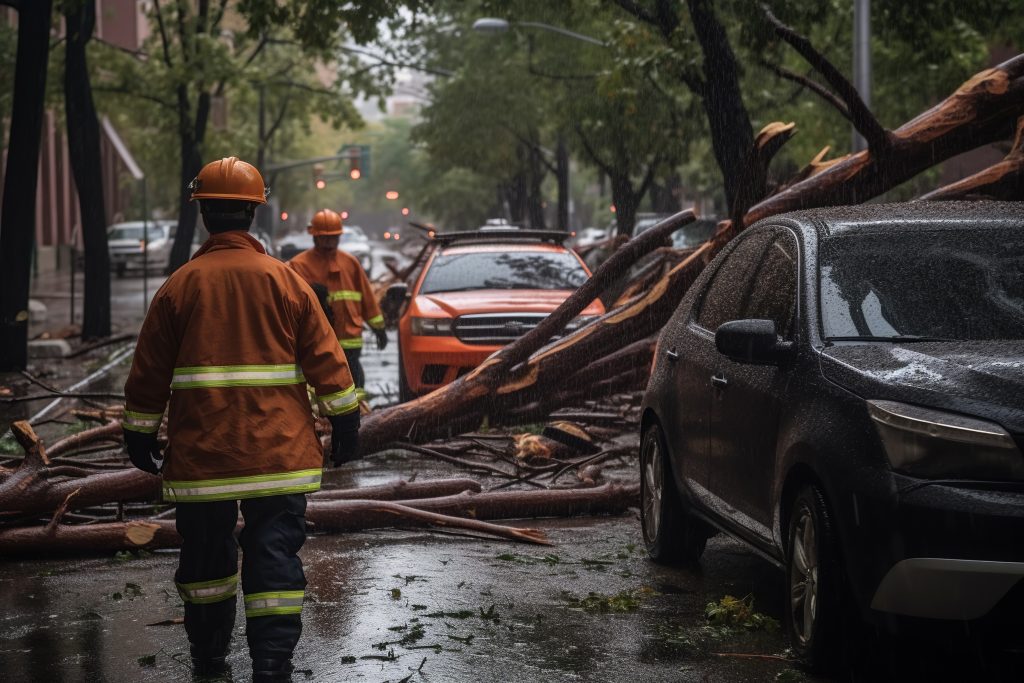
New York City experiences its fair share of severe storms, from powerful nor’easters to intense summer thunderstorms. They cause significant damage to the city’s trees, sometimes even uprooting those that seem strong and healthy. Understanding why this happens and how you can protect your trees is crucial for maintaining the safety and beauty of your property. Factors That Make Trees Vulnerable Several factors can make trees more vulnerable to being uprooted during storms. 1. Root Health and Soil Conditions: The strength and health of a tree’s root system are critical to its ability to withstand strong winds. Trees with shallow or damaged roots are more susceptible to being uprooted. Poor soil conditions like compacted or waterlogged soil, can weaken the root system, making it easier for a storm to topple the tree. 2. Tree Species and Resilience: Different tree species have varying levels of resilience to wind and storm damage. For example, trees with deep root systems, like oaks, are generally more stable than those with shallow roots, like maples. However, even resilient species can become vulnerable if they are old, diseased, or improperly maintained. 3. Previous Damage or Disease: Trees that have suffered damage in previous storms or are affected by disease are more likely to be uprooted in the next big storm. Damage such as broken limbs, bark wounds, or decay weakens the tree’s structure, making it less stable. 4. Soil Saturation: Heavy rainfall can saturate the soil, reducing its ability to hold a tree’s roots in place. When the soil becomes waterlogged, it loses its grip, and even a relatively healthy tree can be uprooted by strong winds. 5. Urban Environment Factors: In urban areas like NYC, trees often grow in confined spaces with limited root spread, making them more vulnerable to storm damage. How Storms Uproot Trees Storms can uproot trees in several ways. High winds push against the tree’s canopy, creating a lever effect that pulls the roots out of the ground. If the soil is saturated from heavy rain, the roots may lose their grip, making it easier for the tree to topple. In some cases, the tree’s structure may already be compromised due to disease or previous damage, which further increases the likelihood of uprooting. The “domino effect” is another phenomenon where one fallen tree can cause nearby trees to uproot as well. This is particularly common in areas where trees are planted close together or in rows. How to Protect Trees from Storm Damage Regular Inspections by an Arborist: Regular check-ups can identify potential weaknesses in your trees, such as root damage, signs of disease, or structural issues. An arborist can recommend treatments or preventative measures to strengthen your trees before a storm hits. Proper Pruning and Care: Maintaining a balanced canopy and removing dead or weakened branches can reduce the risk of uprooting. Proper pruning techniques help to distribute weight evenly and reduce wind resistance, making the tree more stable. Installing Support Systems: For particularly vulnerable trees, installing cabling or bracing systems can provide additional support during storms. These systems help to stabilize the tree and prevent limbs from breaking or the trunk from splitting. Improving Soil Conditions: Ensuring that the soil around your trees is well-drained and not compacted can help to maintain root health and stability. Aerate the soil and add organic matter to improve its structure. Choosing the Right Species for Your Location: When planting new trees, select species that are well-suited to your specific environment. Trees with strong, deep root systems are generally more resistant to storm damage. Common Causes of Tree Uprooting During Storms Cause Explanation Prevention Impact on Trees Cost of Mitigation Weak Root System Poor soil, disease Regular health checks High risk of uprooting Varies, $100-$500 for root care Soil Saturation Heavy rain, poor drainage Improve soil drainage Increased risk of uprooting $200-$1000 for drainage solutions Wind Shear High winds during storms Proper tree positioning and pruning Can lead to complete tree failure $200-$600 for pruning Previous Damage Prior storm damage, decay Tree inspections, removal if needed Weakens tree structure $500-$2000 for removal Urban Constraints Limited root space, structures Strategic planting, root care Restricts growth, increases vulnerability $100-$500 for soil amendments Conclusion Storms can be unpredictable and devastating, even for the strongest trees. Understanding the factors that contribute to tree uprooting can help you take preventative measures to protect your property. Regular inspections, proper pruning, and soil management are all essential for maintaining the health and stability of your trees. If you’re concerned about the condition of your trees or want to prepare for the next storm, contact NYC Tree Pro for a professional assessment and expert advice.
Using Tree Pruning and Removal to Combat Spotted Lanternflies
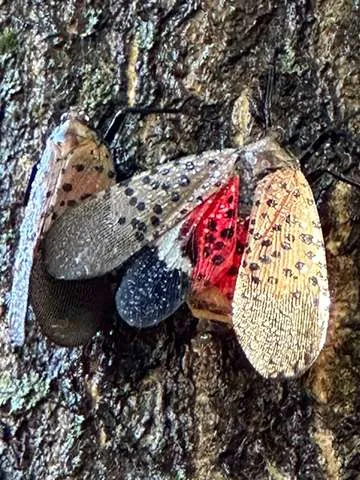
The spotted lanternfly is an invasive insect that has quickly spread across New York City, inflicting considerable harm to trees and plants. This pest presents a major risk to local ecosystems, especially since it targets numerous tree species. As a homeowner or property manager, it’s important to take proactive measures to safeguard your trees from this destructive insect. Two of the most effective ways to manage spotted lanternflies are through tree pruning and, in more severe cases, tree removal. Understanding Spotted Lanternflies The spotted lanternfly (Lycorma delicatula) is native to Southeast Asia but has become a major pest in the United States, particularly in the Northeast. It feeds on tree and plant sap, which weakens the host and makes it more susceptible to disease. The insect’s feeding habits leave behind a sticky substance called honeydew, which promotes the growth of sooty mold. This black, sooty mold not only damages the tree but can also cover outdoor surfaces, making it a nuisance for homeowners. The spotted lanternfly has a one-year life cycle, with adults laying eggs in the fall. Egg masses are found on tree trunks, branches, and even man-made structures. The eggs hatch in the spring, and the nymphs begin feeding on a variety of plants before becoming adults in late summer. Pruning as a Preventative Measure Pruning plays a vital role in managing spotted lanternflies, particularly in the early stages of infestation. By removing infested branches, you can reduce the population of lanternflies on your property and slow the spread of the insect to other trees. Focus on pruning branches that show signs of infestation, such as oozing sap, sooty mold, or egg masses. Additionally, pruning helps improve air circulation within the tree’s canopy, which can make the environment less hospitable for the pests. Regular pruning also allows you to monitor the health of your trees more closely. By inspecting your trees during pruning, you can catch early signs of spotted lanternfly activity and take action before the infestation becomes severe. When Removal is Necessary In some cases, pruning alone may not be enough to control a spotted lanternfly infestation, especially if the tree is heavily infested or already weakened by the pest. Tree removal may be necessary to prevent the lanternflies from spreading to other healthy trees on your property or in the surrounding area. Tree removal is a last resort but is sometimes the only effective way to protect the rest of your landscape. When deciding whether to remove a tree, consider the extent of the infestation, the health of the tree, and its value to your property. A certified arborist from NYC Tree Pro can assess the situation and recommend the best course of action. Signs of Spotted Lanternfly Infestation Sooty mold on trees: This black mold is a sign of honeydew excreted by the lanternflies. Oozing sap: Look for sap oozing from small wounds in the tree bark, a common indicator of infestation. Egg masses on tree trunks: These are usually grayish and can be found on the bark, making them easy to spot during pruning. Presence of adult lanternflies: Adults are about an inch long, with long gray wings and black spots with bright red inside, and they often congregate in large numbers. Wilting or yellowing leaves: This can indicate that the tree is under stress from the feeding activity of the lanternflies. Comparison of Pruning vs. Removal for Spotted Lanternfly Control Method Best Used When Benefits Costs Drawbacks Pruning Early stages of infestation Preserves tree health Lower cost, typically $100-$500 May not be sufficient for severe cases Removal Severe infestation, tree decline Prevents further spread Higher cost, typically $500-$2000 Loss of tree, environmental impact Combined Approach Moderate infestation Balances health and control Moderate cost, depending on extent Requires ongoing monitoring Chemical Treatment When combined with pruning Targets lanternflies directly Varies, $100-$300 per application Environmental concerns, effectiveness varies Monitoring & Maintenance After initial treatment Prevents re-infestation Ongoing cost, typically $100-$300 annually Requires regular inspections
The Challenges of Tree Trimming and Pruning in Tight NYC Spaces

Tree care in New York City presents unique challenges, particularly when it comes to trimming and pruning. The city’s densely packed buildings, narrow streets, and small backyards require a specialized approach to ensure that tree care is done safely and effectively. Navigating Tight Spaces One of the primary challenges of tree trimming in NYC is accessibility. Trees often grow in confined spaces, such as small backyards, along narrow streets, or close to buildings. This limited space can make it difficult to position ladders or bring in heavy equipment. Additionally, the proximity of buildings, vehicles, and power lines increases the risk of property damage or personal injury during tree trimming. To navigate these tight spaces, tree care professionals must be highly skilled and use specialized equipment designed for urban environments. Techniques such as rope and harness systems allow arborists to access hard-to-reach areas without the need for large machinery. This not only ensures safety but also minimizes disruption to the surrounding area. Techniques for Effective Trimming and Pruning in NYC Given the constraints of the urban environment, effective tree trimming and pruning require careful planning and execution. Here are some of the key techniques used by professionals: 1. Use of Pole Pruners and Compact Tools: In tight spaces, traditional saws and pruners may be too bulky to maneuver. Instead, arborists use pole pruners, which allow them to reach high branches without the need for a ladder. Compact chainsaws and hand pruners are also essential for making precise cuts in confined areas. 2. Strategic Pruning: When trimming trees in urban areas, the goal is often to reduce the tree’s size while maintaining its health and aesthetics. Strategic pruning involves selectively removing branches to thin the canopy, reduce wind resistance, and prevent overgrowth. This technique helps to keep the tree balanced and reduces the risk of storm damage. 3. Cabling and Bracing: For trees that are at risk of splitting or losing limbs due to their location, cabling and bracing can provide additional support and involve installing flexible cables or rigid braces within the tree to stabilize its structure and reduce the likelihood of branch failure. 4. Minimizing Disruption: In NYC, tree trimming often takes place in busy residential or commercial areas. To minimize disruption, arborists may schedule work during off-peak hours or use noise-reducing equipment. They also take care to protect nearby structures and landscaping from debris and damage. 5. Safety Precautions: Arborists use personal protective equipment (PPE) such as helmets, gloves, and eye protection to reduce the risk of injury. They also ensure that the work area is secured and that all equipment is in good working order. Common Risks When Trimming Trees in Tight Spaces Damage to Property: Improper trimming techniques can lead to branches falling on nearby buildings, vehicles, or power lines, causing significant damage. Injury to Workers or Bystanders: Tight spaces increase the risk of injury, making it essential for workers to be highly trained and to use proper safety equipment. Harm to the Tree: Without the right techniques, pruning in tight spaces can stress the tree, leading to poor health or even death. Disruption to the Surrounding Area: Tree trimming in urban areas can be disruptive to residents and businesses, particularly if noise levels are high or debris is not properly managed. Legal and Regulatory Issues: In NYC, tree trimming may be subject to local regulations, particularly if the tree is on public property or if the work affects nearby buildings. Private property there is no need for a permit. Specialized Tools for Urban Tree Care Tool Use Benefit Ideal for Cost Pole Pruners Reaching high branches in tight spots Precision without ladder use Narrow spaces, high branches $40 – $100 Compact Chainsaws Cutting larger branches in confined areas Effective without taking up space Larger branches, confined areas $100 – $300 Rope and Harness Safe positioning for tree workers Ensures safety in precarious locations High, inaccessible branches $150 – $300 Hand Pruners Precise cutting of small branches Ideal for detail work Small branches, tight spots $20 – $50 Noise-Reducing Chainsaws Cutting branches in urban areas Minimizes disruption Urban environments, close to residents $200 – $500 Conclusion Tree trimming and pruning in NYC’s tight spaces require a specialized approach that balances safety, efficiency, and the health of the tree. By using the right techniques and equipment, professionals can navigate the challenges of urban tree care while minimizing disruption to the surrounding area. If you have trees that need trimming or pruning in a confined space, contact NYC Tree Pro for expert services. Our team is equipped to handle even the most challenging tree care tasks, ensuring your trees remain healthy and your property remains safe.
How to Trim a Mulberry Tree

Mulberry trees grow quickly and have beautiful foliage, and delicious fruit. To keep these trees thriving, regular pruning is essential. Whether your goal is to shape the tree, control its size, or enhance fruit production, proper pruning will ensure your tree remains healthy and productive. In this guide, we’ll take you step-by-step through the best methods for trimming a mulberry tree, including timing, techniques, and aftercare. Why Pruning Your Mulberry Tree is Important Pruning serves several critical purposes for mulberry trees: Promoting Tree Health: Pruning removes dead or diseased branches, which can reduce the risk of infections and encouraging healthy growth. Controlling Size: Mulberry trees grow quickly and can become quite large if left unchecked. Regular pruning keeps the tree at a manageable size for your garden or yard. Boosting Fruit Production: For fruit-bearing varieties, proper pruning ensures an abundance of accessible fruit. Shaping: In some cases, pruning is done for aesthetic reasons, such as maintaining a desired shape or form. When is the Best Time to Prune a Mulberry Tree? Major Pruning in Late Winter The best time for heavy pruning is during the tree’s dormant phase, typically in late winter, just before the new growth starts in the spring. Pruning during dormancy reduces sap loss and allows the tree to heal more efficiently. It’s also a good time to see the tree’s structure clearly without foliage obstructing your view. Light Pruning in Early Summer If your tree has excessive growth, you can perform some light pruning in early summer to maintain its size. Be cautious about cutting larger branches, though, as mulberries can struggle to heal these wounds during the active growing season. Beware of Sap Bleeding Mulberry trees are known to bleed sap from pruning wounds, especially if pruned outside of the dormant season. While sap bleeding isn’t harmful to the tree, it can be unsightly and may cause irritation if it gets on your skin. Essential Tools and Pruning Techniques Before you start pruning, make sure you have the right tools on hand: Tool Use Importance Best for Cost Pruning Shears Cutting small branches Ensures clean cuts to prevent damage Thin, young branches $20 – $40 Loppers Cutting thicker branches Necessary for larger branches Medium to large branches $30 – $60 Ladder Reaching higher branches Ensures safety and accessibility High branches and hard-to-reach areas $80 – $150 Gloves Protecting hands from cuts and sap Prevents injuries All types of branches $10 – $20 Safety Goggles Protecting eyes from debris Prevents eye injuries When cutting branches above the head $10 – $20 Hand Pruners: Best for small branches under 1 inch thick. Loppers: Ideal for branches that are 1-2 inches in diameter. Pruning Saw: For thicker branches that are over 2 inches in diameter. Sterilizing Agent: Always clean tools before and after pruning to prevent diseases from spreading between plants. Avoid Cutting Large Branches It’s best to avoid removing large branches (greater than 2 inches in diameter) as mulberry trees are slow to heal from large wounds, making them more susceptible to pests and infections. Step-by-Step Pruning Instructions Step 1: Remove Dead or Damaged Branches Begin by cutting away any branches that are dead, diseased, or damaged. This will enhance the tree’s overall health and reduce the risk of disease spreading. Make sure to cut back to healthy wood, leaving the branch collar intact to promote healing. Step 2: Remove Crossing and Inward-Growing Branches Branches that cross or grow inward towards the center of the tree should be pruned. These can crowd the tree, reduce airflow, and cause branches to rub against each other, which may lead to wounds and disease. Keep the canopy open to encourage better air circulation and sunlight exposure. Step 3: Shape the Tree for Light and Airflow When shaping the tree, focus on creating an open, vase-like structure with good spacing between branches. This allows light and air to reach the interior of the tree, which is especially important for fruit-bearing trees as it helps reduce the likelihood of disease and promotes even ripening of fruit. Step 4: Prune to Control Size If your tree is becoming too tall or wide, carefully trim back the larger branches to a manageable size. When pruning for fruit production, remember that mulberry trees bear fruit on last year’s growth, so be mindful not to over-prune and remove too many fruit-bearing branches. Advanced Pruning Techniques Pruning for Maximum Fruit Production Mulberries produce fruit on wood that grew the previous year, so pruning needs to be done carefully to preserve these branches. Here are some tips: Remove any dead or damaged wood first. Thin out branches to improve light penetration and air circulation. Lightly prune lateral branches, but ensure enough of the previous year’s growth remains to encourage fruit production. Consider creating a “harvesting notch” by pruning specific areas to make fruit more accessible. Pollarding for Shape Control Pollarding is a technique used to maintain a specific shape or control the height of your tree by regularly removing new growth back to the larger framework branches. This method should be started when the tree is young and requires consistent pruning to maintain. If done improperly, pollarding can weaken the tree and make it vulnerable to disease, so proceed with caution. Common Pruning Mistakes to Avoid Over-pruning: Taking off too much of the tree can reduce its vigor and fruit yield, particularly if you remove too much of last year’s growth. Topping: Avoid cutting the top of the tree, as this encourages weak regrowth and can damage the tree’s structure. Pruning Large Branches: Large cuts heal slowly and may leave the tree susceptible to pests and disease. Try to avoid pruning branches over 2 inches in diameter. Aftercare for Your Mulberry Tree Once you’ve finished pruning, your tree may need a bit of extra care: Monitor for Sap Bleeding: If you pruned outside of the dormant season, it’s normal to see some sap bleeding. This usually stops on its own, but monitor the tree to ensure the
The Spotted Lanternfly and the Ailanthus Tree: A NYC Property Owner’s Guide
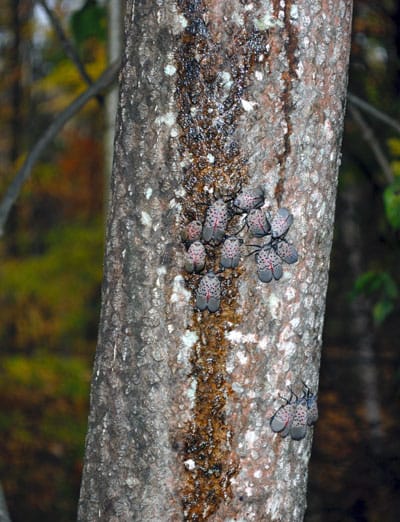
A Silent Threat: Invasive Species in NYC Invasive Species Origin Ecological Impact Management Strategies Spotted Lanternfly (Lycorma delicatula) China, India, Vietnam Threatens various trees and plants, weakens them with feeding, promotes disease spread. * Tree removal (esp. Ailanthus altissima) * Egg mass scraping * Insecticide application (targeted) * Public awareness and monitoring programs Tree of Heaven (Ailanthus altissima) China Disrupts native plant communities, reduces biodiversity, allelopathic chemicals inhibit surrounding plant growth. * Mechanical removal (cutting/grinding) * Herbicide application (for stumps) * Controlled burns (in some areas) * Planting native species to compete Norway Maple (Acer platanoides) Europe, Western Asia Outcompetes native trees, reduces forest regeneration, dense shade reduces understory growth. * Selective removal to encourage native species * Biological controls (insects/fungus) * Herbicide application (targeted) Kudzu Vine (Pueraria montana var. lobata) Japan, China, Southeast Asia Rapidly smothers native vegetation, alters forest structure, reduces wildlife habitat. * Mechanical removal (pulling/cutting) * Herbicide application (targeted) * Prescribed grazing (in some areas) Common Reed (Phragmites australis) Eurasia, Africa Forms dense monocultures, crowds out native wetland plants, reduces biodiversity. * Controlled burns (winter) * Water level manipulation * Herbicide application (targeted) * Biological controls (insects) The Spotted Lanternfly in NYC: Threat to Trees and Plants New York City faces a double threat from invasive species – the Spotted Lanternfly and the Ailanthus tree (Tree of Heaven). The Spotted Lanternfly, a brightly colored planthopper native to Asia, first arrived in the US in 2014 and has since established itself in several states, including New York. This fast-reproducing pest poses a significant threat to a variety of trees and plants, with a particular fondness for the Ailanthus. They weakens plants, making them susceptible to disease. The Ailanthus Tree: A Not-So-Heavenly Invader The Ailanthus tree, while initially valued for its rapid growth and tolerance of harsh conditions, has become a major problem in NYC due to its aggressive nature. It outcompetes native species for resources, releases chemicals that inhibit nearby plant growth, and can quickly dominate entire landscapes. This disrupts natural ecosystems and reduces biodiversity, creating an environment where invasive species like the Spotted Lanternfly can thrive. NYC’s Spotted Lanternfly History: A Cause for Concern The first sighting of the Spotted Lanternfly in NYC occurred on Staten Island in 2020. Since then, the infestation has spread rapidly across all five boroughs, with particularly high concentrations in Manhattan and the Bronx. Despite ongoing control efforts by state and local agencies, the lanternfly’s rapid reproduction and spread make eradication a significant challenge. The Unfortunate Alliance: Why Ailanthus Trees and Spotted Lanternflies are a Perfect Match The Ailanthus tree acts as a critical host for the Spotted Lanternfly. Here’s why this combination is detrimental to NYC’s urban ecosystem: A Buffet for Lanternflies: Ailanthus trees provide a readily available food source for lanternflies, allowing their populations to explode. A Breeding Ground for Trouble: The abundance of Ailanthus trees facilitates the spread of lanternflies to other parts of the city, threatening a wider range of flora. A Weakened Ecosystem: Both the lanternfly’s feeding and the Ailanthus tree’s allelopathic effects weaken native plants, making them more susceptible to additional threats. Case Studies: NYC Tree Pro Protects Properties from Invasive Species At NYC Tree Pro, our expert arborists have witnessed firsthand the devastating impact of the Spotted Lanternfly and Ailanthus tree on NYC properties. Here are two examples of how we helped property owners combat this invasive duo: Yorkville, Manhattan: A property owner faced a severe Spotted Lanternfly infestation on their Ailanthus trees. The rapid spread threatened nearby plants. NYC Tree Pro recommended removing the Ailanthus trees, eliminating the primary food source for the lanternflies. After removal, lanternfly activity significantly decreased. Follow-up treatments ensured the infestation didn’t return. Spanish Harlem, Manhattan: A community garden’s diverse plant life was at risk due to Spotted Lanternflies on their Ailanthus trees. NYC Tree Pro’s strategic removal plan not only stopped the lanternfly infestation but also allowed native plants to flourish, improving the garden’s overall health and biodiversity. The Benefits of Removing Ailanthus Trees with a Spotted Lanternfly Infestation Removing Ailanthus trees infested with Spotted Lanternflies offers several advantages for NYC property owners: Stops Lanternfly Infestations at the Source: Eliminating the primary food source disrupts the lanternfly life cycle and helps control their population. Protects Native Plants: Removing Ailanthus trees creates space for native species to thrive, promoting a healthier and more diverse ecosystem. Enhances Property Value: A well-maintained property with healthy trees is more aesthetically pleasing and valuable. Addressing invasive species issues improves the overall landscape health. Beyond Ailanthus: Why Managing Invasive Species Matters The Spotted Lanternfly and the Ailanthus tree disrupt the delicate balance of NYC’s ecosystems. They outcompete our native plants and animals for resources, alter habitats, and decrease biodiversity. This can have cascading effects, impacting everything from the health of our urban forests to the overall ecological balance of the city. Taking Action: NYC Tree Pro, Your Partner in Invasive Species Management Expert Arborist Services: At NYC Tree Pro, we understand the complexities of invasive species management. Our team comprises certified arborists with extensive knowledge of both the Spotted Lanternfly and the Ailanthus tree. We possess the expertise to assess your property, determine the best course of action, and safely and effectively remove Ailanthus trees while minimizing disruption to your landscape. Our Ailanthus Tree Removal Process: Comprehensive Tree Inspection: Our arborists will conduct a thorough inspection of your Ailanthus trees and the surrounding area to assess the severity of the Spotted Lanternfly infestation. Customized Removal Plan: Based on the inspection, we’ll develop a personalized removal plan that prioritizes safety and efficiency. This might involve techniques like bucket trucks, cranes, or targeted herbicide application (for stump removal). However it depends on the size, location, and surrounding environment of the trees, as each job is different. Safe and Efficient Removal: Our highly trained crew utilizes state-of-the-art equipment and adheres to strict safety protocols to ensure the safe and efficient removal of Ailanthus trees. Debris Removal and Cleanup: We’ll meticulously remove all debris from the removal
Tree Removal in NYC: A Comprehensive Guide for Property Owners
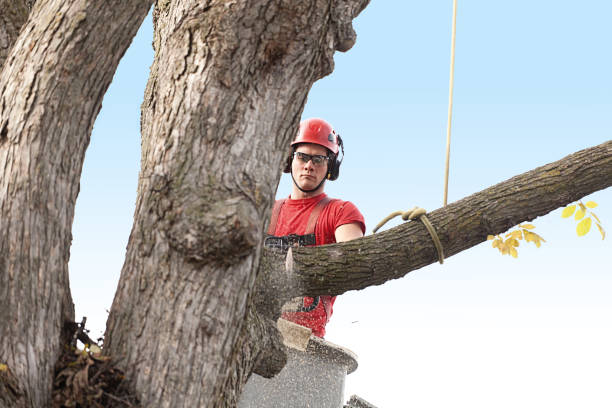
Living in the vibrant, densely packed boroughs of New York City, particularly Manhattan and the Bronx, comes with unique challenges – one of them being tree management. This guide delves into the various reasons why NYC property owners might need professional tree removal services, explores the cutting-edge equipment utilized by NYC Tree Pro, and highlights the key advantages of choosing them for your arborist needs. Compelling Reasons for Tree Removal in NYC Tree removal in NYC isn’t a one-size-fits-all solution. Here are some of the most common reasons why property owners seek professional tree removal services: Safety First: In a city environment, overgrown or damaged trees pose a significant threat. Dead or diseased branches can become projectiles in strong winds, potentially causing property damage, injuries, or worse. Uprooted trees due to storms can be catastrophic. NYC Tree Pro prioritizes safety with 24/7 emergency services to address urgent situations and mitigate potential hazards before they occur. Tree Health: Sometimes, despite our best efforts, trees succumb to disease or insect infestations. These compromised trees can become breeding grounds for pests and diseases, jeopardizing the health of nearby healthy trees. Early detection and intervention are crucial. NYC Tree Pro’s certified arborists possess the expertise to diagnose tree health issues and recommend the most appropriate course of action, including removal if necessary. Aesthetics and Property Value: Well-maintained trees enhance the visual appeal of property and contribute to its overall value. However, overgrown, diseased, or poorly placed trees can detract from the aesthetics and even lower your property value. Strategic tree removal can create a more visually pleasing landscape, improve sunlight penetration, and open up valuable space for new landscaping projects. Structural Concerns: Trees planted too close to buildings can wreak havoc on your foundation over time. Their expansive root systems can grow into and damage foundations, sewer lines, and other underground infrastructure, leading to expensive repairs. Additionally, large trees with aggressive root systems can crack sidewalks and driveways. Proactive tree removal by NYC Tree Pro’s skilled professionals can save you considerable expense and hassle in the long run. NYC Tree Pro’s Cutting-Edge Equipment Arsenal At NYC Tree Pro, we understand that every tree removal project presents unique challenges. That’s why we invest heavily in the latest and most advanced equipment in the industry, ensuring we can do any job efficiently and safely, no matter the size or complexity. Here’s a glimpse into our state-of-the-art equipment: Aerial Lift Trucks: These specialized vehicles provide unrivaled access for our arborists. They can safely reach high branches and navigate tight urban spaces where traditional climbing methods might be impractical. High-Capacity Wood Chippers: We are committed to eco-friendly practices. Our powerful wood chippers transform branches and trunks into valuable mulch, which can be used for landscaping projects or redistributed for other purposes. This not only streamlines debris management but also promotes sustainability. Precision Cranes: For particularly large or precariously positioned trees, cranes become an invaluable tool. Skilled crane operators work hand-in-hand with our arborists to execute a smooth and efficient removal. Why Choose NYC Tree Pro? Here’s What Sets Us Apart We are a family-owned, third-generation business with a deep-rooted commitment to serving the NYC community. Here are just a few reasons why NYC Tree Pro should be your go-to choice for tree removal services: 24/7 Emergency Response: We understand that emergencies don’t wait for convenient business hours. That’s why we offer 24/7 emergency tree services to address urgent tree-related issues, ensuring your safety and minimizing potential damage. Unmatched Expertise: Our team comprises arborists who possess the knowledge and experience to determine the safest and most efficient removal methods, and navigate the complexities of urban tree removal. We combine traditional arborist expertise with the latest advancements in technology to deliver exceptional results. Commitment to Safety: Safety is paramount at NYC Tree Pro. Our crew members are trained and equipped with the latest safety gear, adhering to strict industry standards. We prioritize a meticulous planning process before every removal, minimizing risk and ensuring a smooth operation. Transparency and Communication: We believe in clear communication, and our arborists will conduct a thorough inspection of your property and trees, explain their recommendations in detail, and answer any questions you may have. We’ll provide you with a transparent and upfront cost estimate before any work begins. Respect for Your Property: We understand that your property is valuable to you. Our cleanup is thorough, leaving your property clean and debris-free. Environmentally-Conscious Practices: Sustainability is a core value at NYC Tree Pro. We utilize eco-friendly practices whenever possible. Our wood chippers transform wood debris into valuable mulch, which can be reused for landscaping projects. We also recycle any materials that can be salvaged. Client Satisfaction Guaranteed: Customer satisfaction is our priority. We strive to exceed your expectations with exceptional service, clear communication, and a commitment to safety and efficiency. We are proud of our track record of satisfied customers, as shown by the positive testimonials on our website and Google Map listing. Client Testimonials: Proven Excellence Here are a few examples from our Google reviews: Mark K: “Great job! Was in a jam after a storm. Got an estimate the next day and the job was completed the following morning. The tree was in a tough spot behind the building. Excellent execution by the crew. Would recommend!” Jerry S: “Thank you for removing my tree behind my business. Good prices and great people. I would highly recommend this company.” These testimonials highlight our prompt response, professional execution, and customer-centric approach. Ready to Address Your Tree Removal Needs? NYC Tree Pro is your trusted partner for all your tree removal needs in Manhattan and the Bronx. Whether you’re facing a safety hazard with a diseased tree, need to improve the aesthetics of your property, or require emergency storm cleanup, our team of certified arborists and highly trained crew members are here to help. Contact NYC Tree Pro today for a free consultation and quote. We’ll assess your situation, discuss your options, and provide you with
How Do I Know If a Tree Needs to Be Removed?

Trees add so much to our lives, from the beauty of leafy streets to the shade on a hot summer day. But sometimes, those same trees can become a problem. Knowing when to remove a tree can prevent damage and keep your property safe. If you’re in Manhattan, especially the Upper East Side or Upper West Side, this guide will help you understand when it’s time to call in the pros. NYC Tree Pro has the expertise to handle all your tree care needs. How Do You Know If a Tree Is Going to Uproot? When a tree in your yard or near your building looks like it might uproot, it’s time to take action. Here are some signs to watch for: Leaning Trunk: If a tree that used to stand tall is now leaning, especially after a storm, it’s a sign that the roots might be compromised. In Manhattan, where space is tight, a leaning tree can quickly become a hazard. Root Damage: Have you noticed construction around your property? Excavation work can harm roots, making a tree unstable. NYC Tree Pro can assess the damage and determine if the tree needs to come down. Soil Heaving: Look around the base of the tree. If you see the soil lifting or cracking, it means the roots are pulling out of the ground. This is especially common after heavy rains or floods. What Are the Signs That a Tree Might Fall? A tree that’s at risk of falling can be a serious danger. Here’s what to look for: Cracks in the Trunk: Deep splits or cracks can mean the tree is structurally unsound. If you’re walking around Manhattan and notice a tree with a large crack, it’s best to report it. Dead or Falling Branches: While it’s normal for trees to shed a few leaves and branches, too many dead branches are a red flag. Imagine walking down Broadway on the Upper West Side and seeing a tree shedding large branches—that’s a situation that needs attention. Fungus Growth: Mushrooms growing at the base of a tree usually indicate internal rot. This compromises the tree’s stability. NYC Tree Pro can inspect and remove diseased trees safely. Which Way Will a Tree Fall in a Storm? Predicting where a tree will fall during a storm can be tricky, but here are some clues: Leaning Direction: A tree that leans towards your house is more likely to fall in that direction. Weight Distribution: If one side of the tree has more branches and leaves, it’s more likely to fall that way. In Manhattan, where buildings are close together, this can be especially dangerous. Wind Direction: During storms, trees usually fall in the direction of the wind. Strong winds can uproot even healthy trees. How Do You Tell If a Tree Will Hit Your House? Worried about a tree hitting your house? Here’s how to assess the risk: Proximity: Measure the distance between the tree and your house. If the tree is taller than this distance, it’s a potential risk. In Manhattan, where buildings are often close to the street, this is a common concern. Branch Overhang: Large branches overhanging your house can cause damage if they break off. Picture a large tree branch crashing through your window—it’s not something you want to deal with. Tree Health: Regular inspections by NYC Tree Pro can help determine if your trees are at risk. Real-Life Examples and Solutions Upper East Side Brownstone A resident on East 79th Street noticed their tree leaning significantly after a heavy storm. Concerned about the safety of their home and neighbors, they called NYC Tree Pro. Our team quickly assessed the root damage and safely removed the tree before it could cause any harm. Upper West Side Brownstone On West 86th Street, a homeowner had a tree in front of their brownstone that was damaged and leaning dangerously. Passers-by were concerned it might fall on an unsuspecting walker. The homeowner called NYC Tree Pro. We responded promptly, evaluated the tree’s condition, and removed it safely, ensuring the safety of both the property and the public. Midtown Commercial Building A large tree fell on a walkway in front of a commercial building on Madison Avenue during a storm. NYC Tree Pro’s emergency team arrived swiftly to clear the tree and debris, restoring access and safety to the area. This prompt response prevented further disruption for the businesses in the building. Why Hiring NYC Tree Pro Is a Good Idea Living in Manhattan means you need a tree service that understands urban environments. Here’s why NYC Tree Pro is your best choice: Expert Arborists: Our team consists of certified arborists who know the unique challenges of tree care in Manhattan. From the Upper East Side to the Upper West Side, we’ve got you covered. Emergency Services: Trees can pose immediate hazards, especially after storms. Our teams are available 24/7 in an emergency. Call us if you need tree service before, during, or after a storm. Storm Cleanup: NYC Tree Pro is equipped to handle extensive storm damage. From removing fallen trees to clearing debris, we restore your property quickly and safely. Safety First: Our professionals use state-of-the-art equipment and follow strict safety protocols to ensure every job is done right. Conclusion Don’t wait until it’s too late. If you notice any of these warning signs, contact NYC Tree Pro today. Our expert team is ready to assess your trees and provide the necessary services to keep your property safe. Whether you’re in the Upper East Side, Upper West Side, or anywhere in Manhattan, we’re here to help. Call us now for a free consultation and let’s keep your trees healthy and your property safe.
Tree Pruning and Trimming in NYC: Expert Tips and Techniques
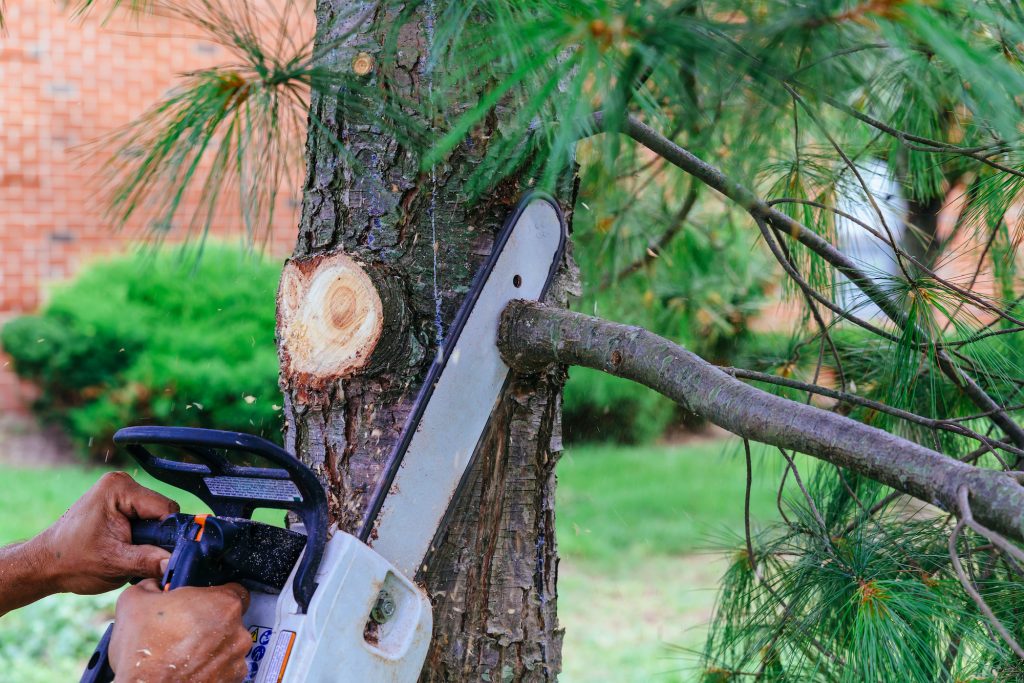
In a bustling urban environment like New York City, where space is limited and greenery is cherished, proper tree care becomes even more critical. Whether you’re a homeowner looking to enhance your property or a business aiming to maintain a polished exterior, understanding the nuances of tree trimming and pruning can make a significant difference. This guide will delve into various pruning methods, highlight their importance, and explain when it’s best to call in the professionals, like NYC Tree Pro. Understanding Tree Trimming and Pruning Tree trimming and tree pruning might seem interchangeable, but they serve different purposes. Tree trimming in NYC typically involves cutting back overgrown branches to ensure the tree maintains a desired shape and size, which is crucial in the confined spaces of urban areas. On the other hand, tree pruning focuses on removing dead, diseased, or damaged branches to promote tree health and safety. Types of Pruning Methods Crown Thinning: This method involves removing branches to increase light penetration and help air circulation within the tree canopy. It’s particularly beneficial for mature trees that might be prone to wind damage. Crown Raising: This technique removes the lower branches of a tree to clear space for pedestrians, vehicles, or buildings. Crown raising is common in NYC, where trees often grow near sidewalks and streets. Crown Reduction: Ideal for controlling the size of a tree, crown reduction involves cutting back branches to reduce the overall height and spread. This method is often used when trees grow too close to buildings or power lines. Deadwooding: This process entails removing dead, dying, or diseased branches to prevent decay and promote the tree’s overall health. Deadwooding is crucial for safety, as dead branches fall which can cause damage or hurt someone. Formative Pruning: Essential for young trees, formative pruning shapes the tree as it grows, ensuring a strong structure and preventing future issues. Importance of Tree Pruning and Trimming in NYC Proper tree care is vital for several reasons: Health: Regular pruning removes diseased or infested branches, preventing the spread of pests and diseases. Safety: Trimming trees reduces the risk of branches falling and causing injury or property damage, a crucial consideration in densely populated areas like Manhattan. Aesthetics: Well-maintained trees look better, and can increase your property value. Growth: Pruning promotes healthy growth by allowing light and air to reach all parts of the tree, ensuring it thrives in its urban setting. When to Call in Tree Service Professionals While DIY tree care can save money, certain situations warrant the expertise of professional arborists like those at NYC Tree Pro: High Branches: If the branches that need pruning are too high, attempting to trim them yourself can be dangerous. Professionals have the equipment and skills to handle such tasks safely. Complex Pruning: Different trees require different pruning techniques. Professionals can identify the best methods for each type of tree and shrub, ensuring optimal health and growth. Safety Concerns: If a tree is near power lines, buildings, or other structures, professional help is essential to avoid accidents and damage. Cameron Schilp, a satisfied NYC Tree Pro client in Manhattan, shares, “These guys did a great job on my trees behind my building in NYC. I would gladly recommend them .” As certified arborists NYC Tree Pro is also licensed and expert at tree removal. Melanie Martinez in the Bronx notes, “Needed a tree removed from my backyard in the BX. Quick job and they were very professional. Very satisfied with the work.” Conclusion NYC Tree Pro is dedicated to providing the highest level of tree care services, ensuring your trees are healthy, safe, and beautiful. Contact us today to learn more about how we can help with your tree trimming and pruning needs in Manhattan and beyond.

